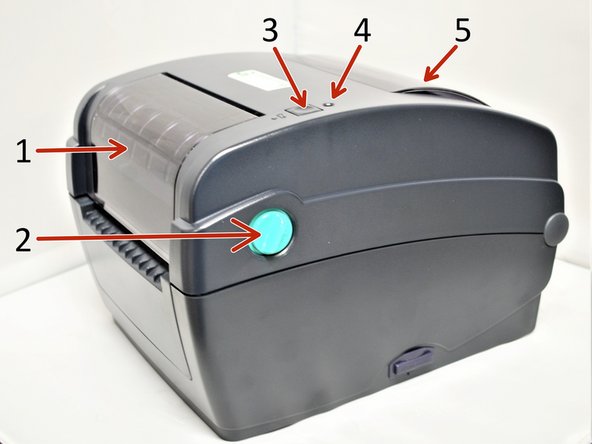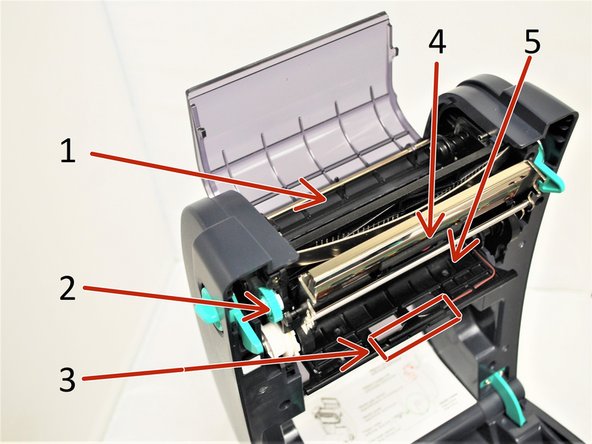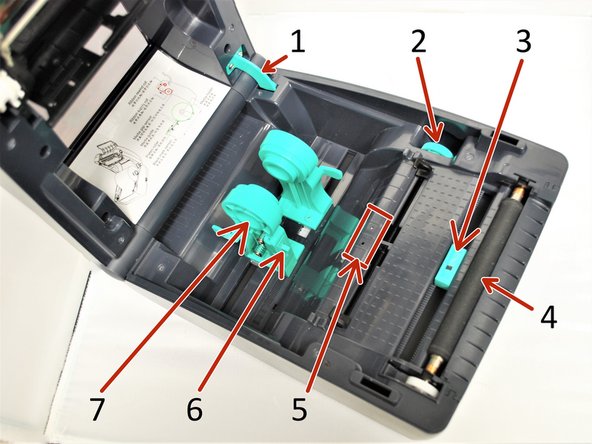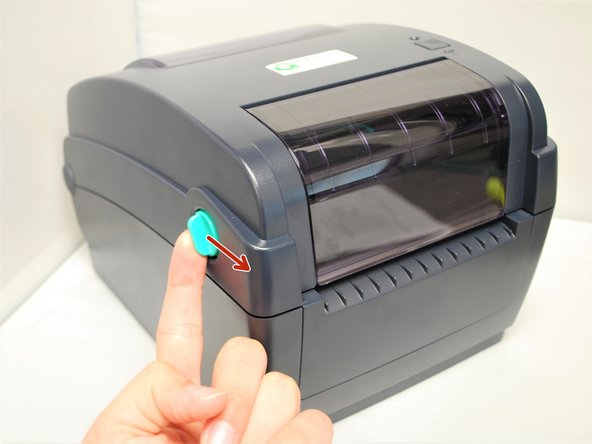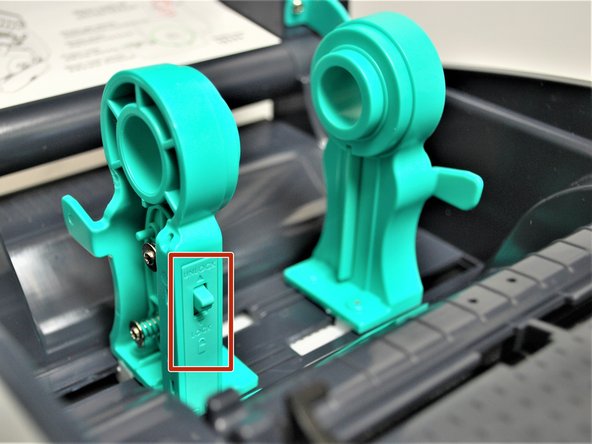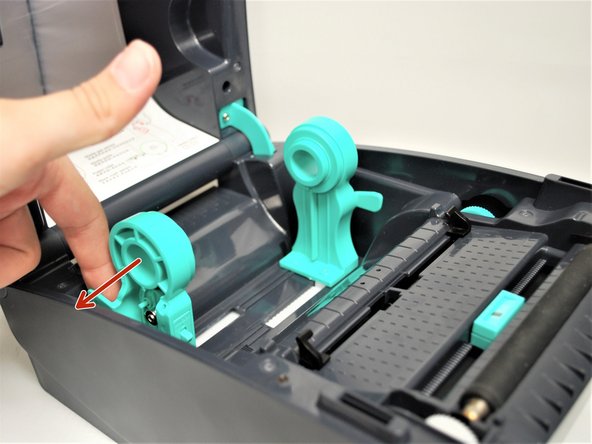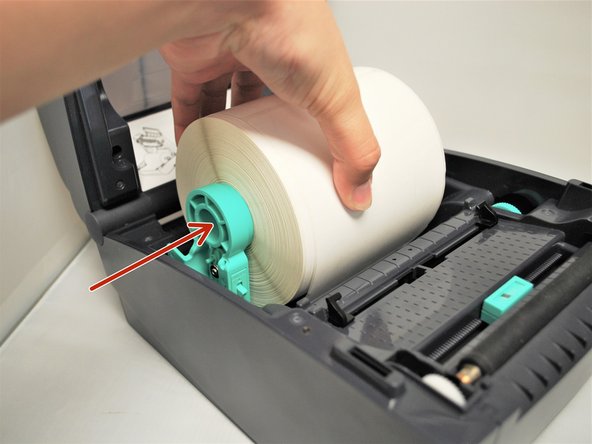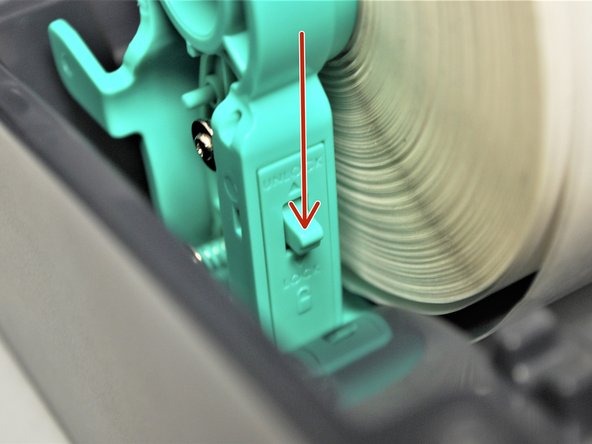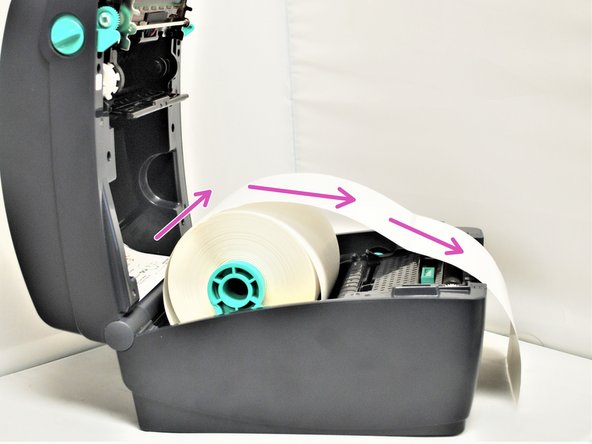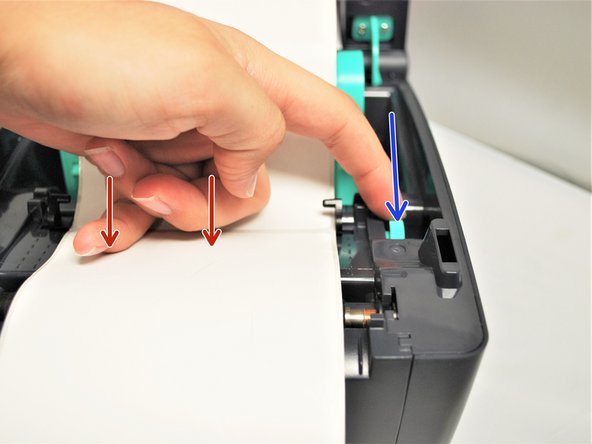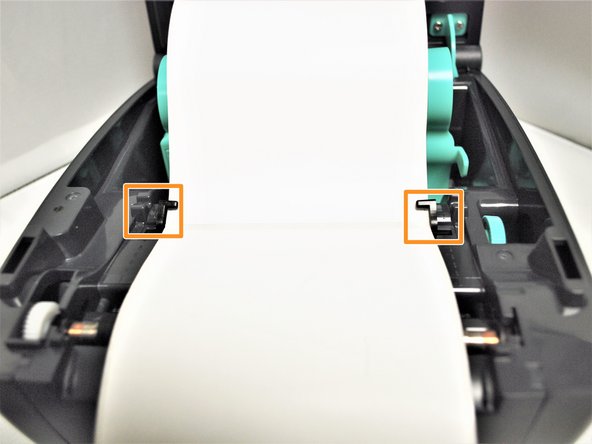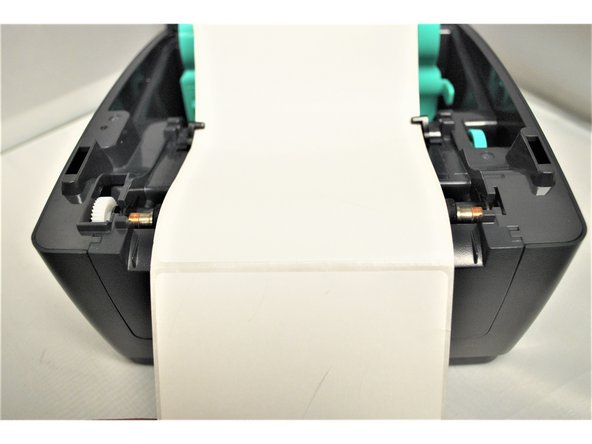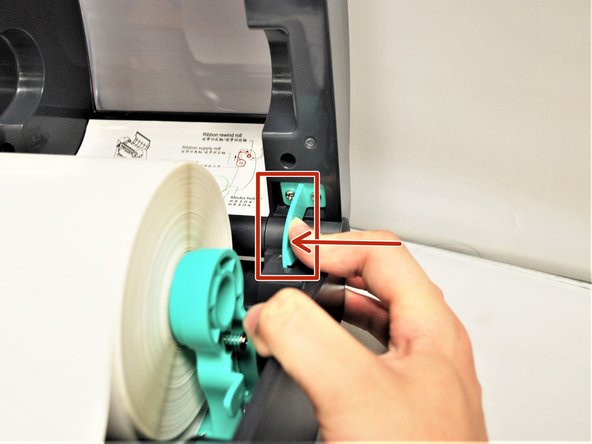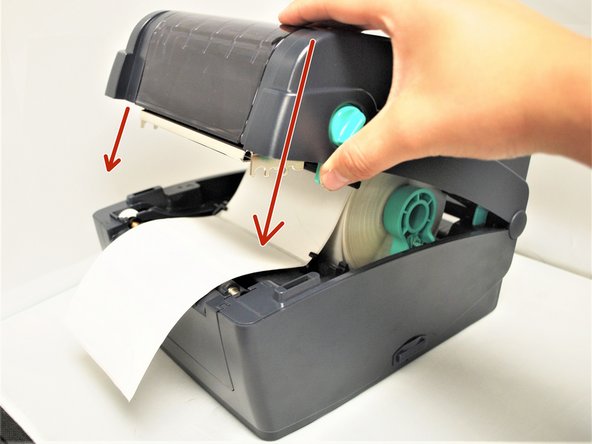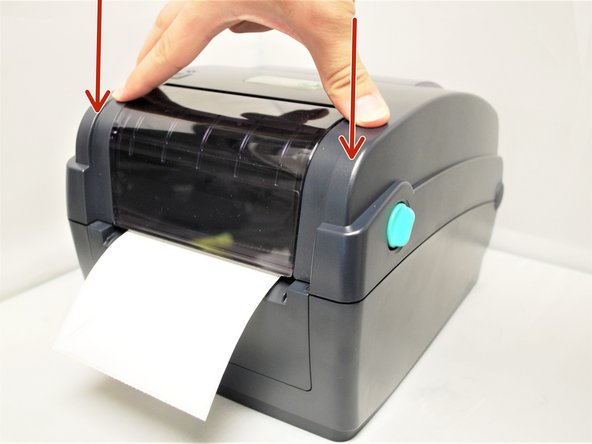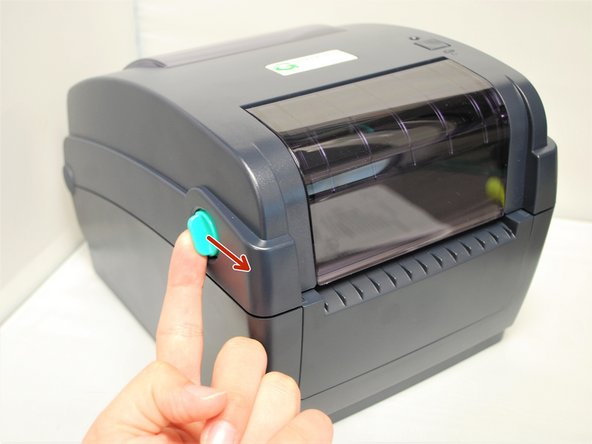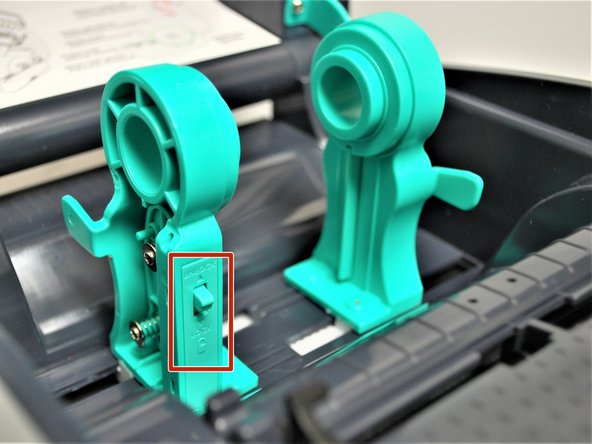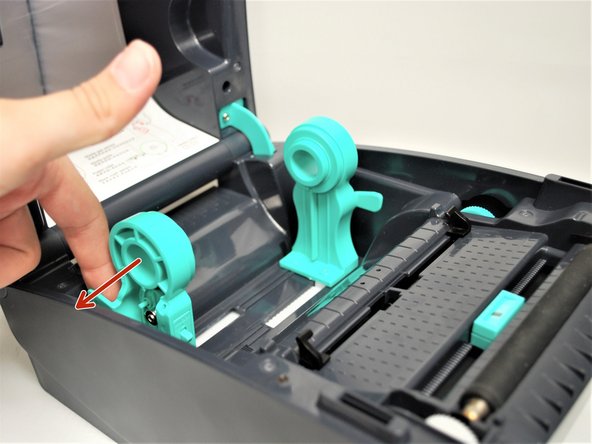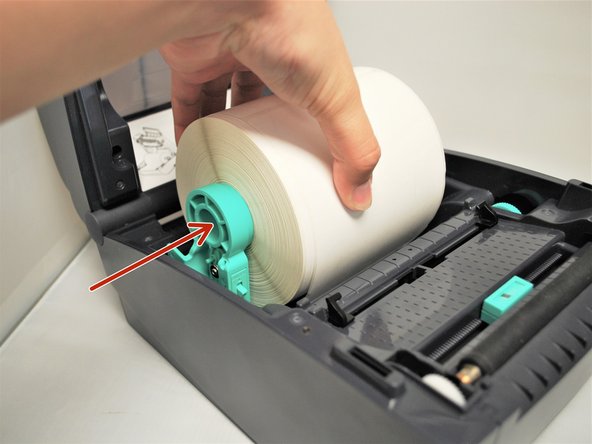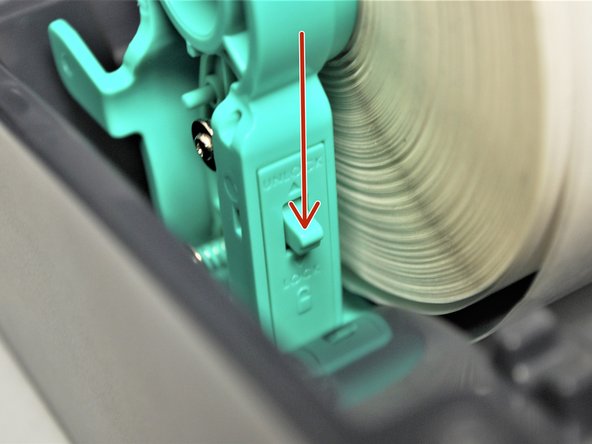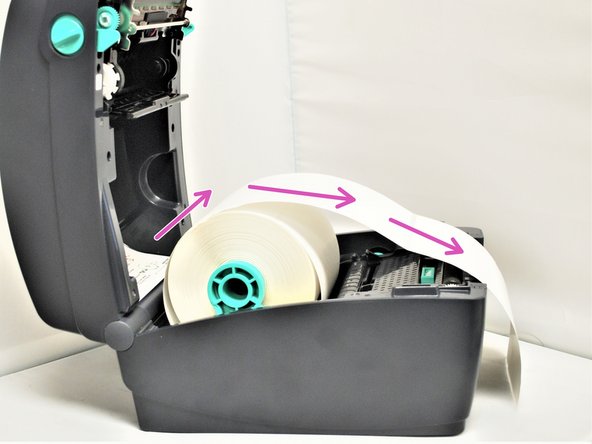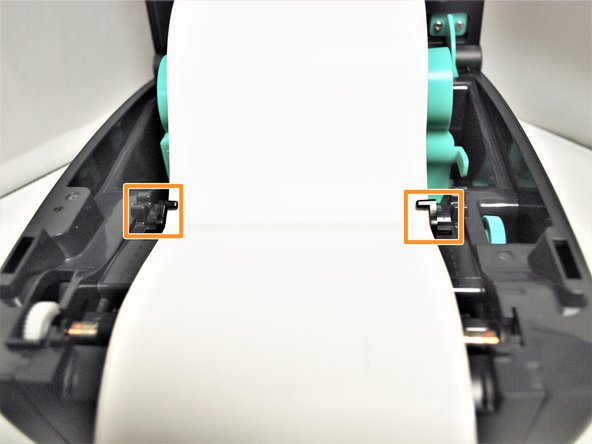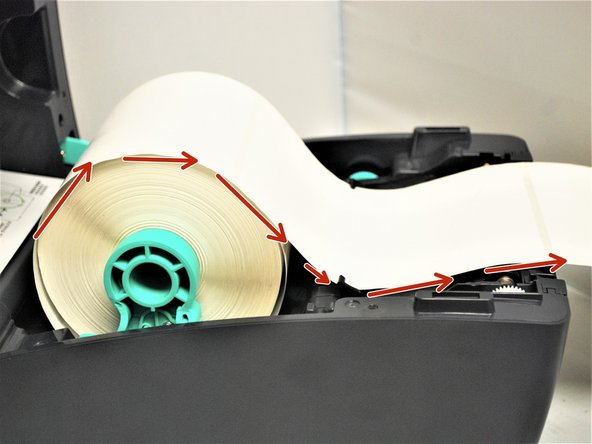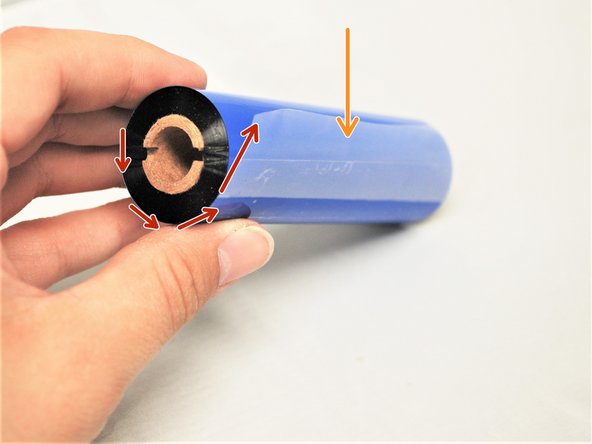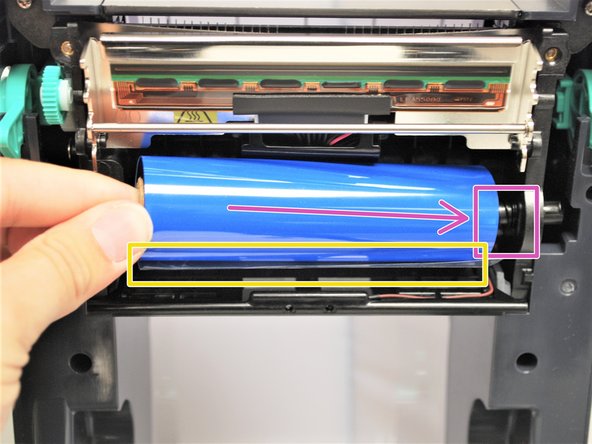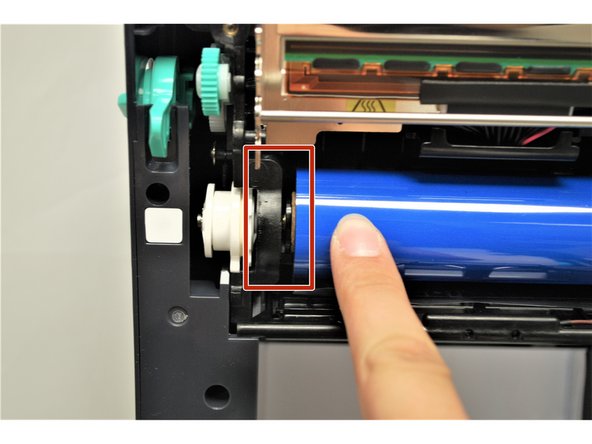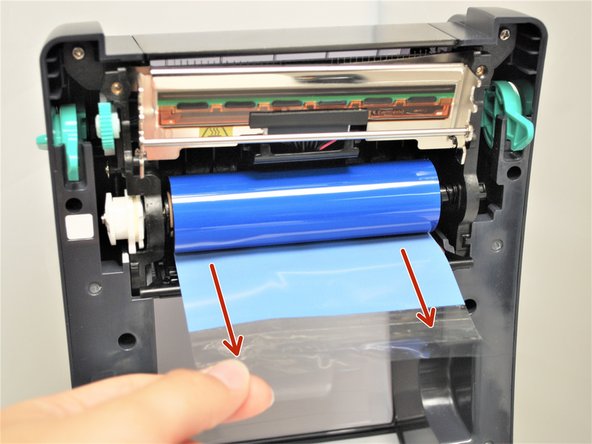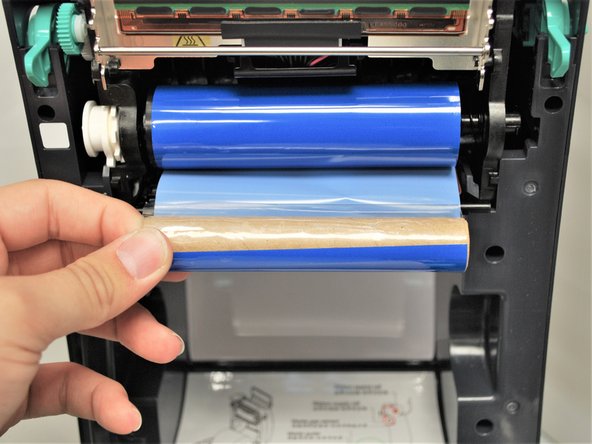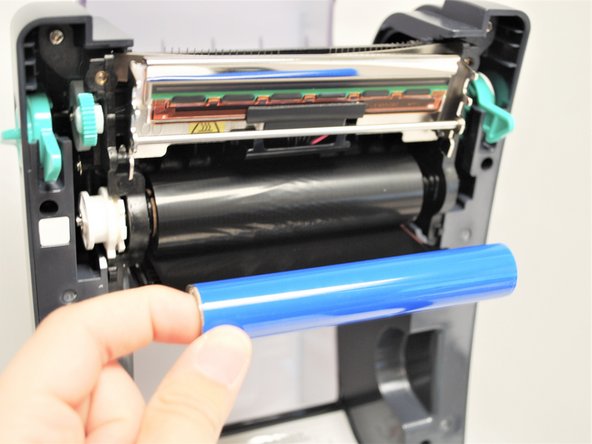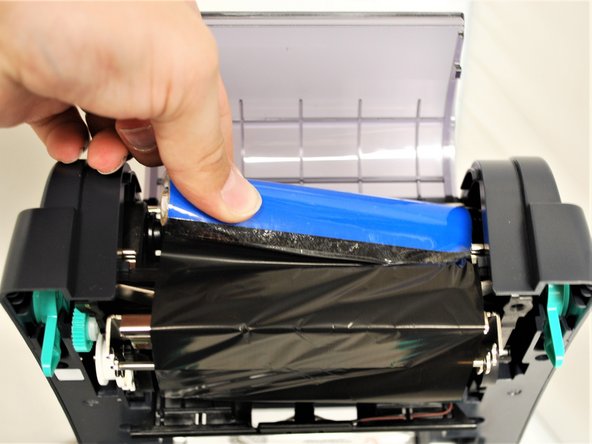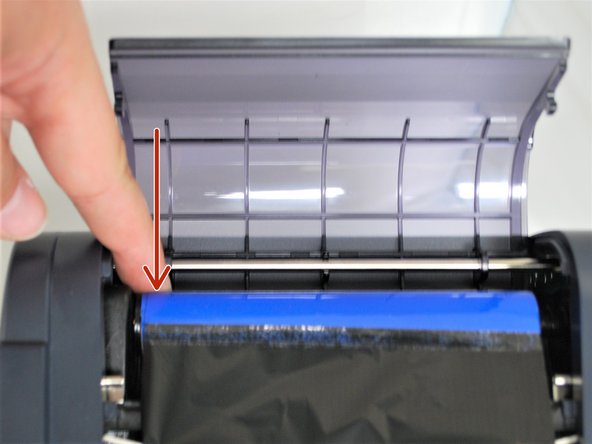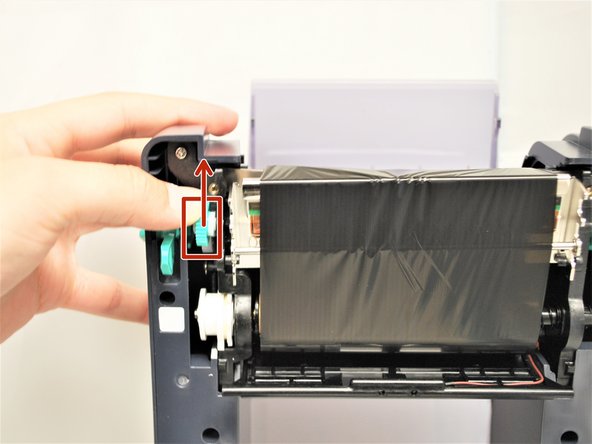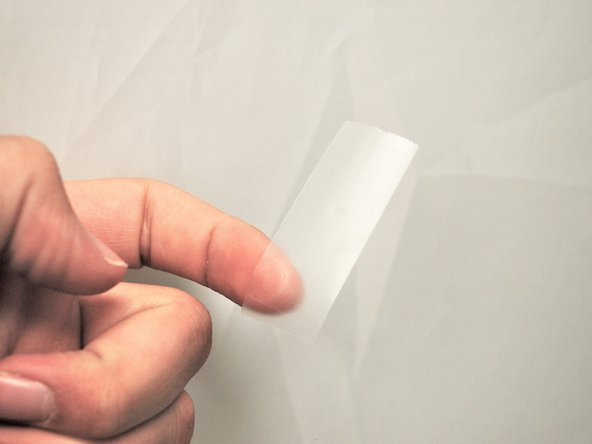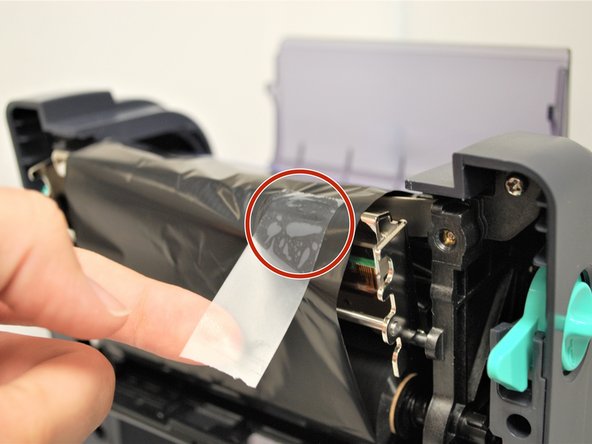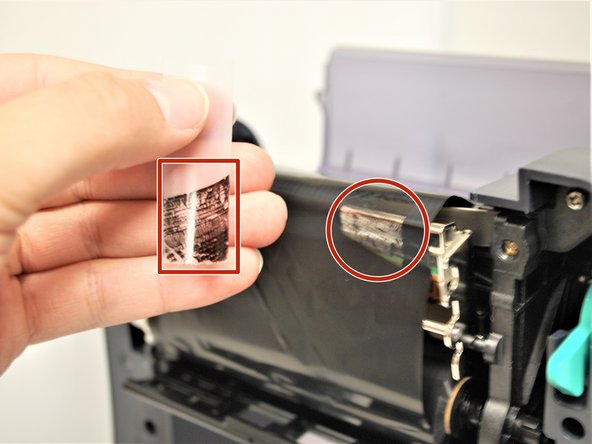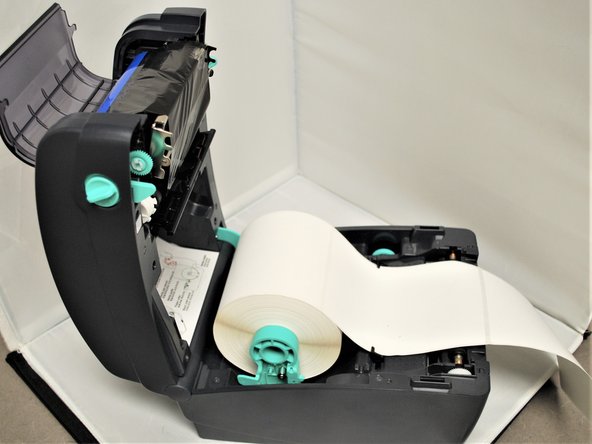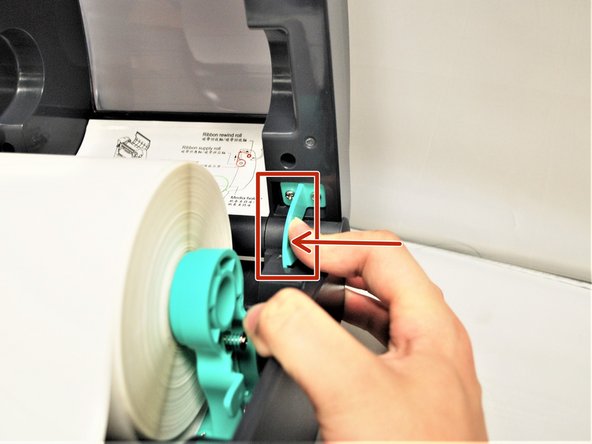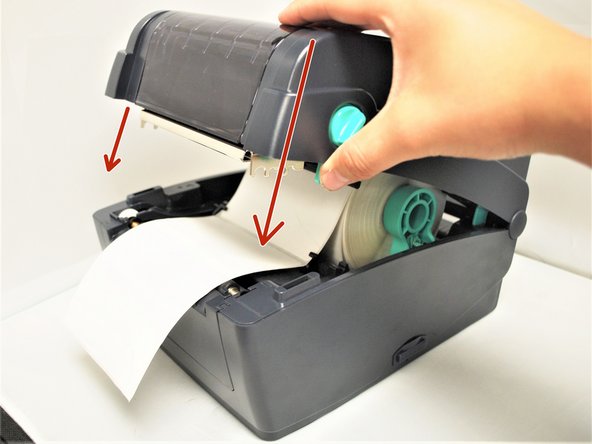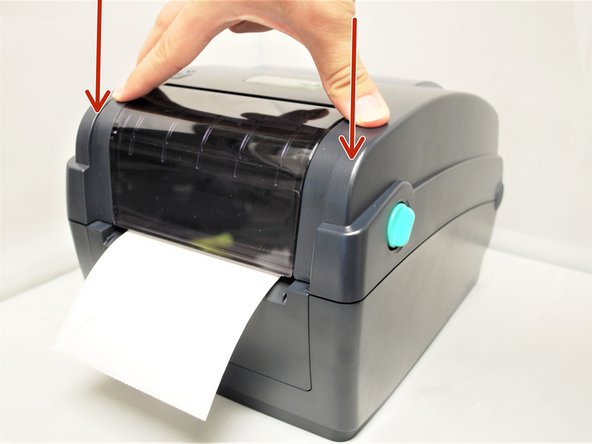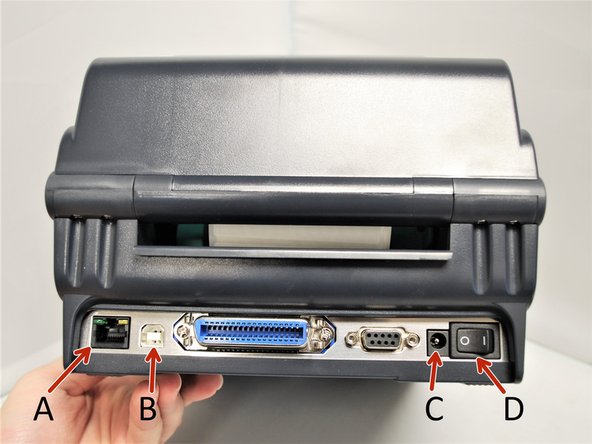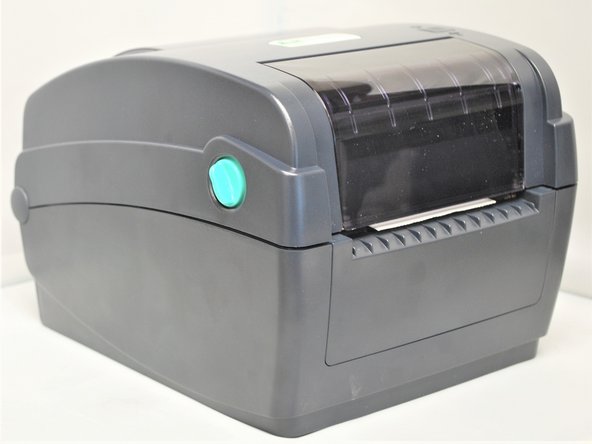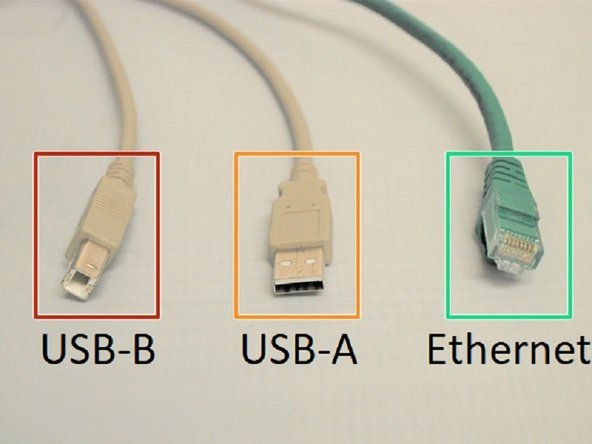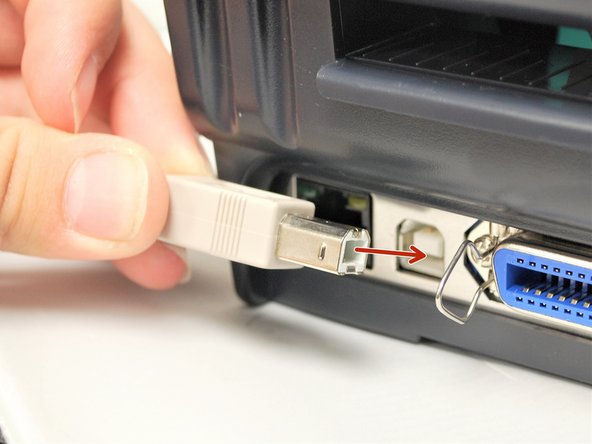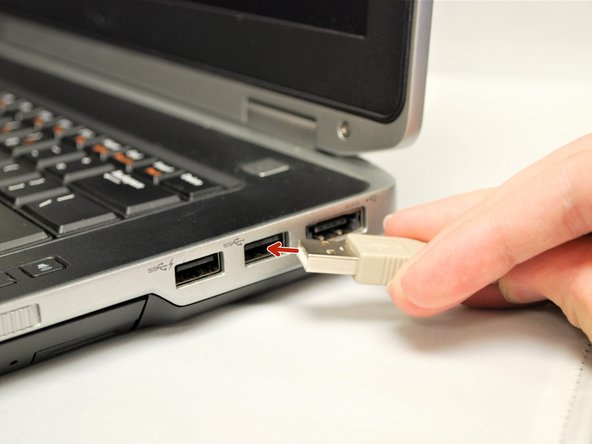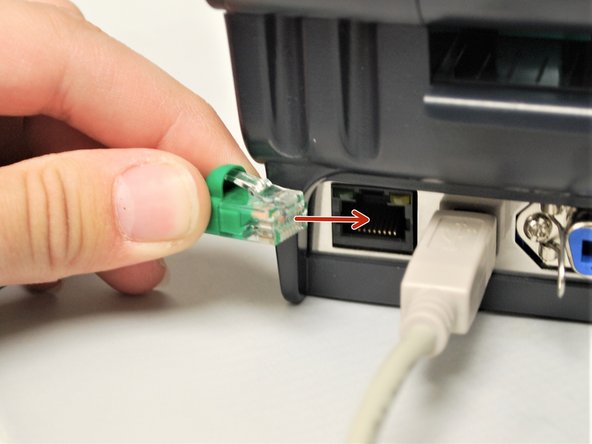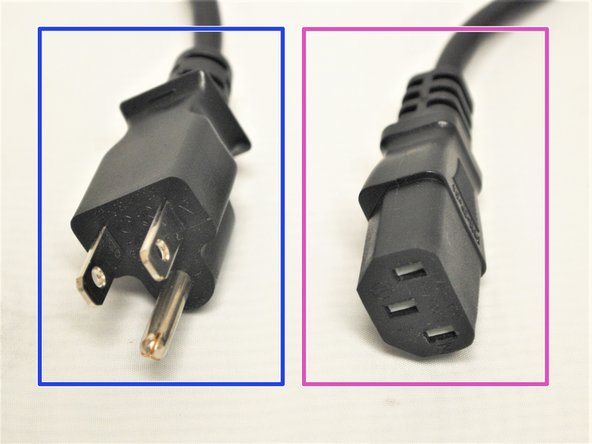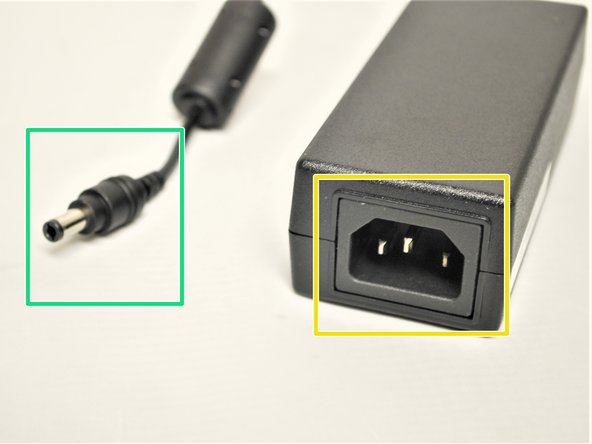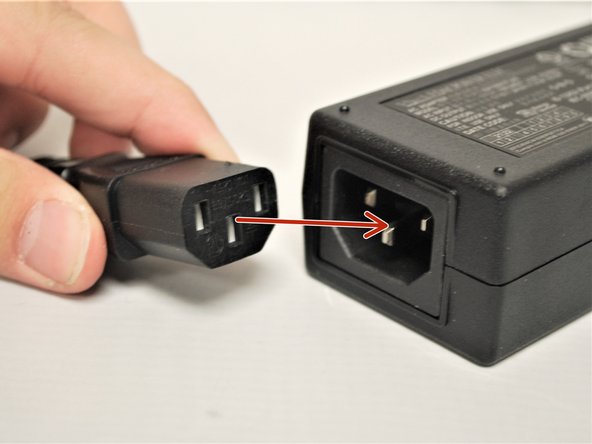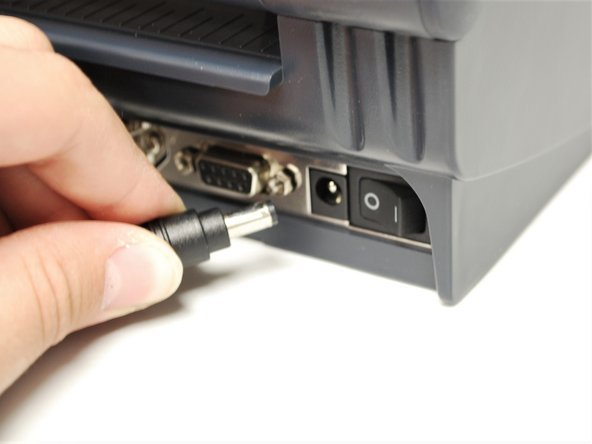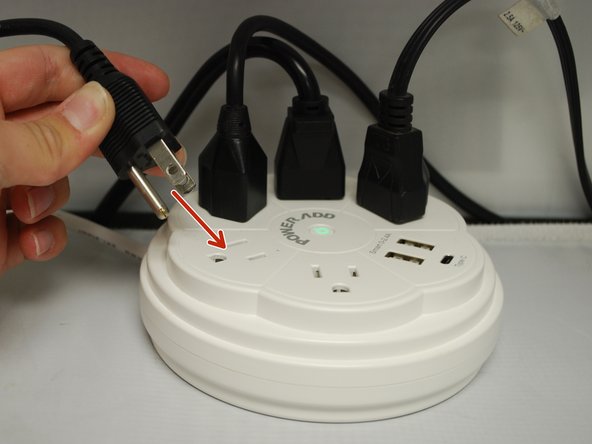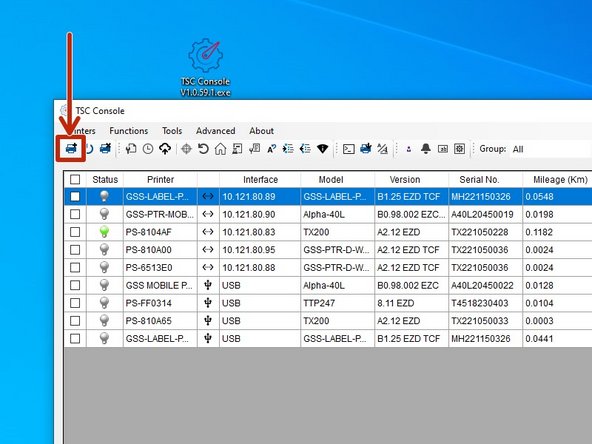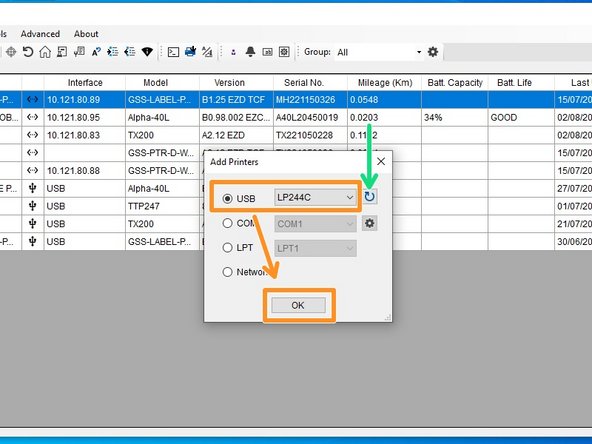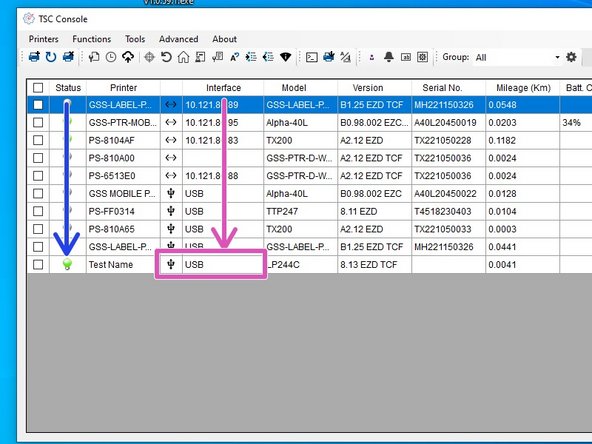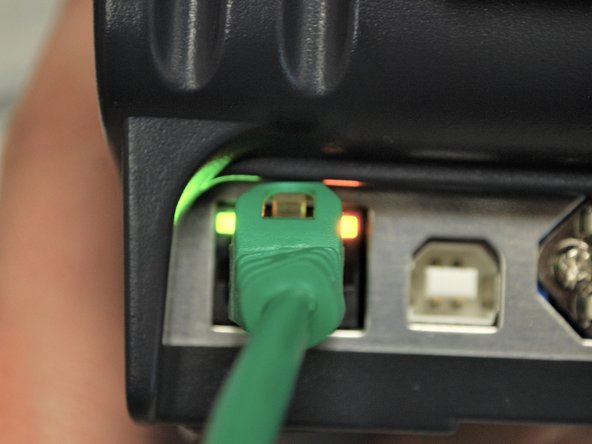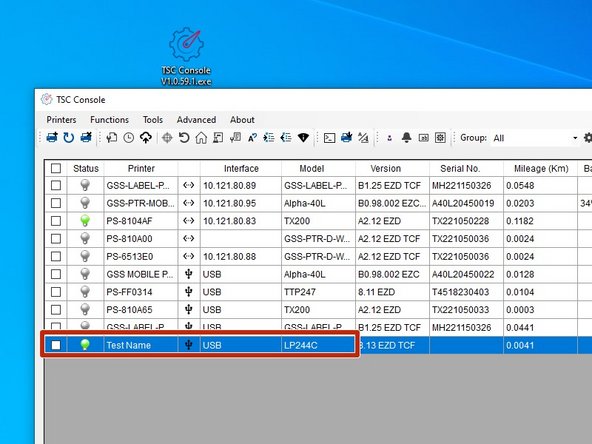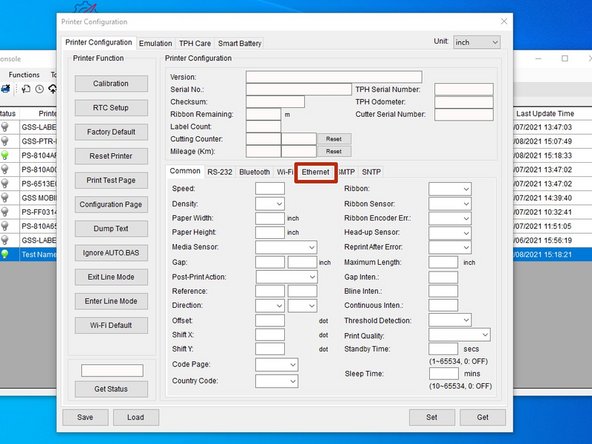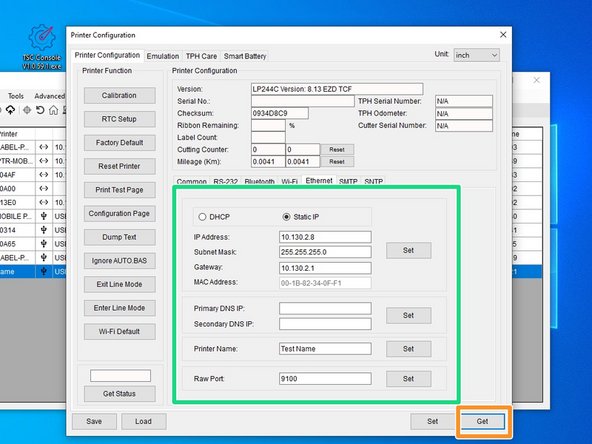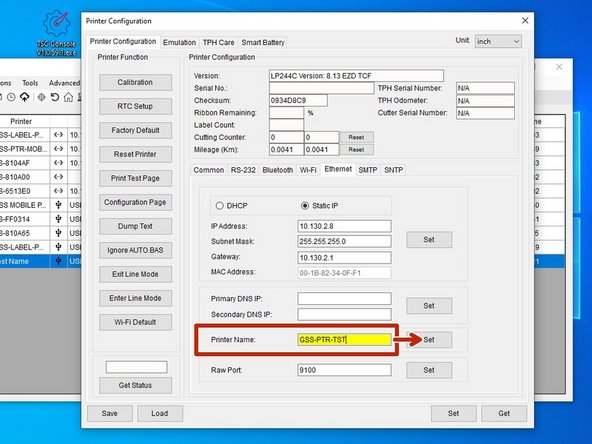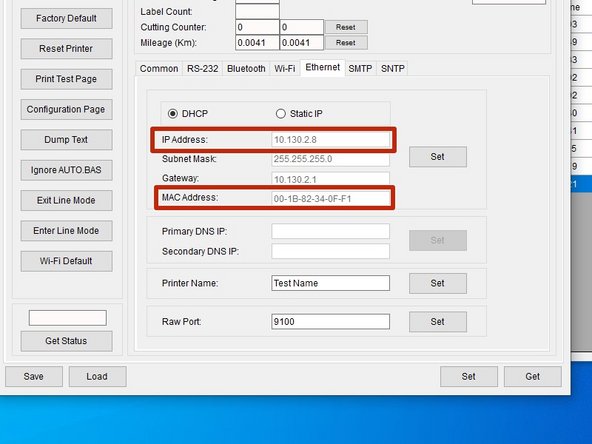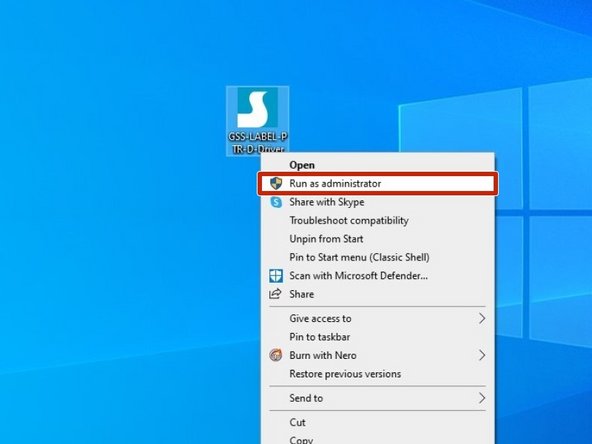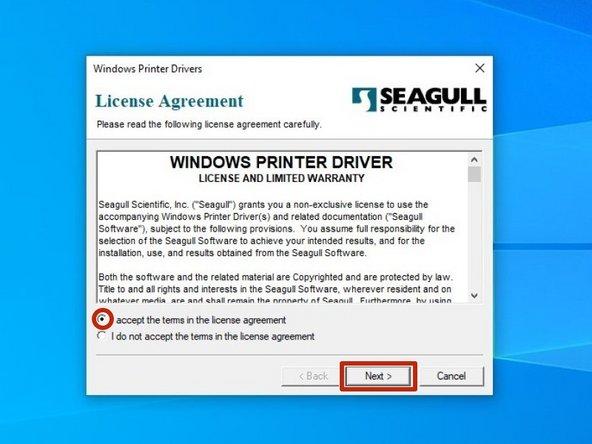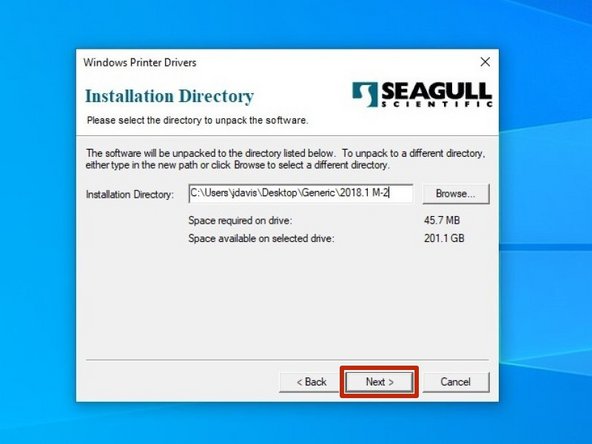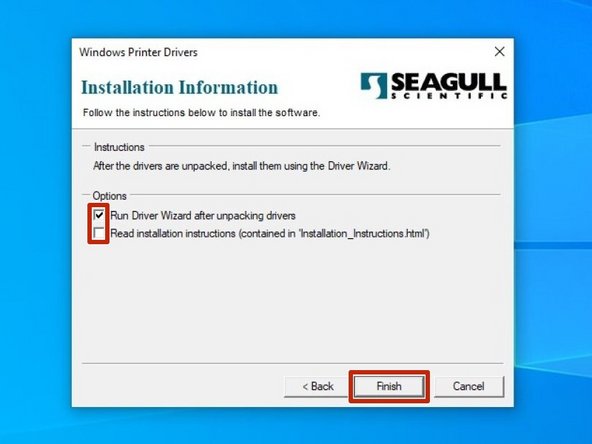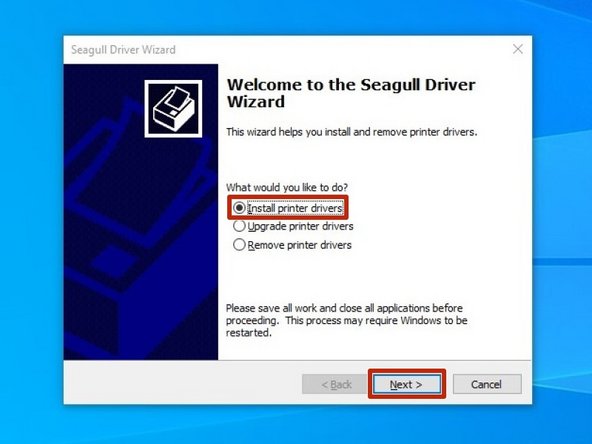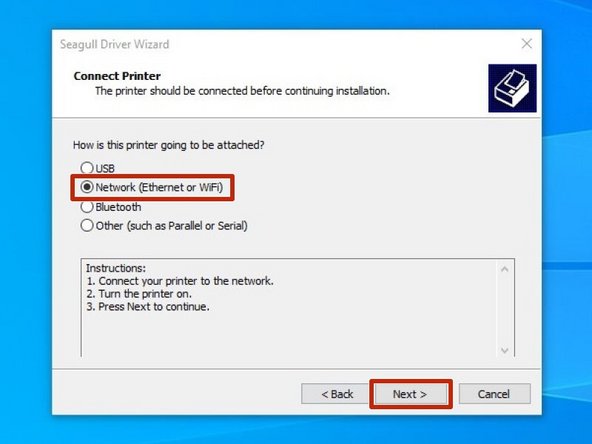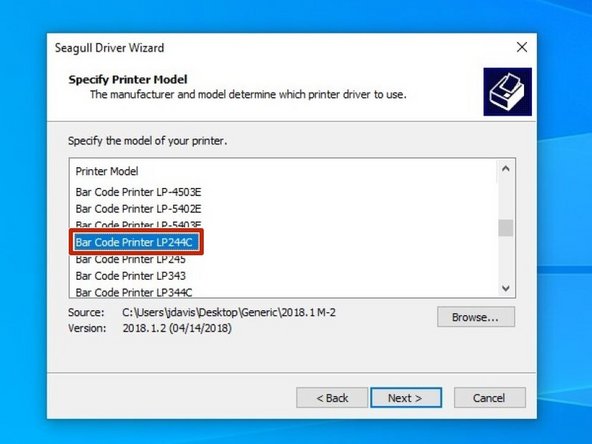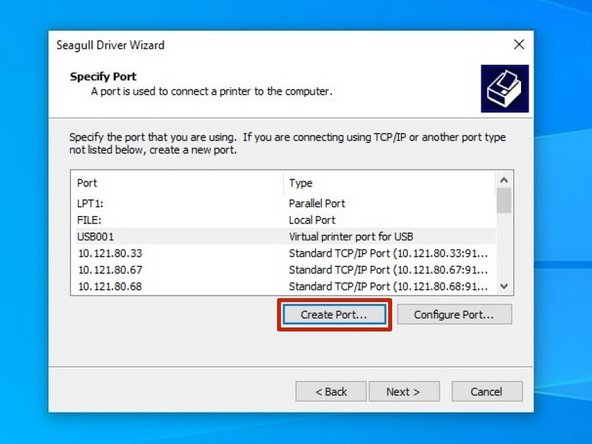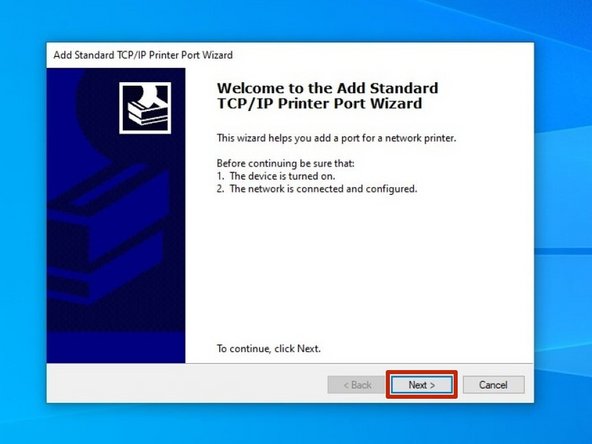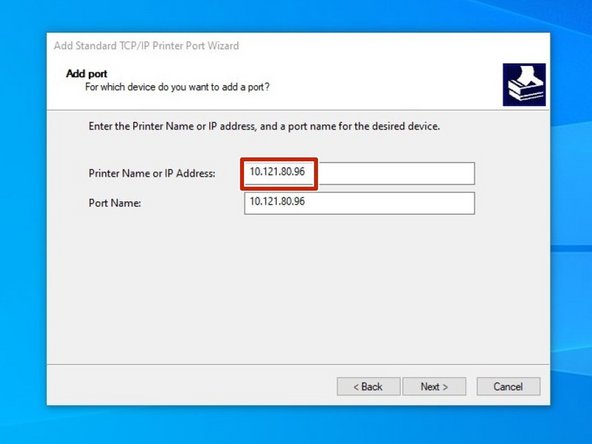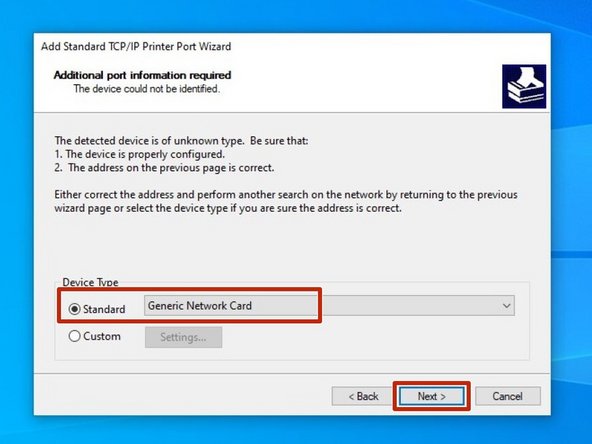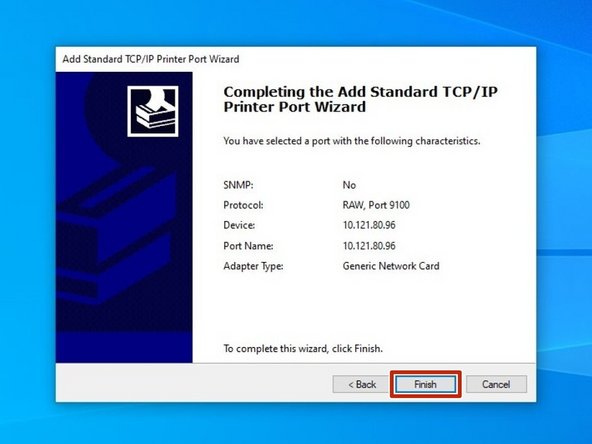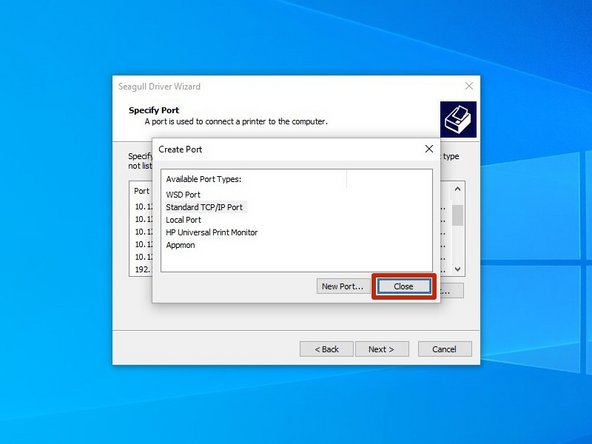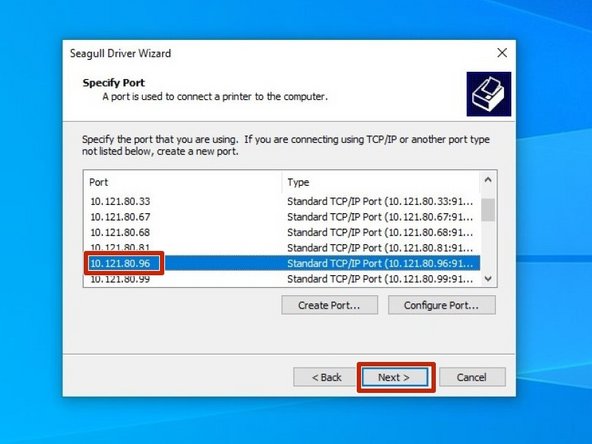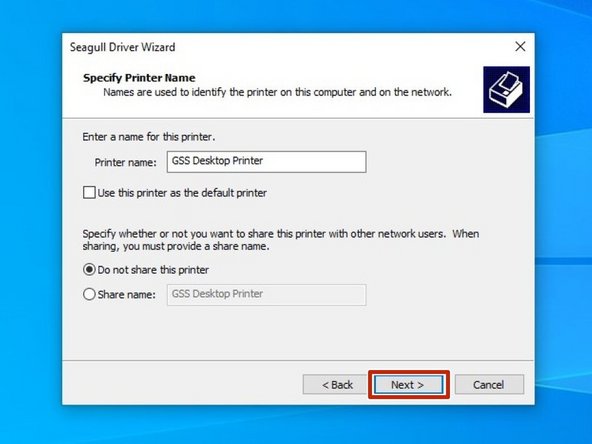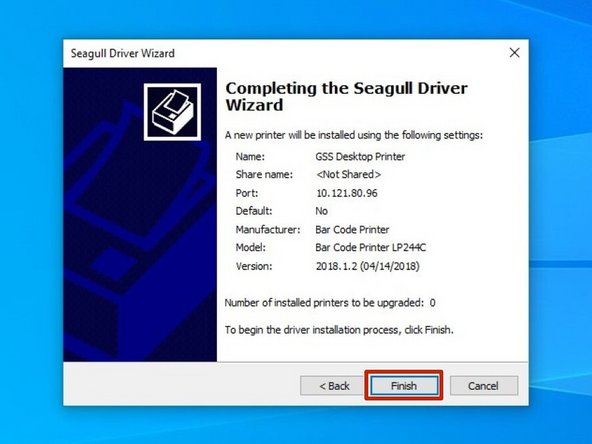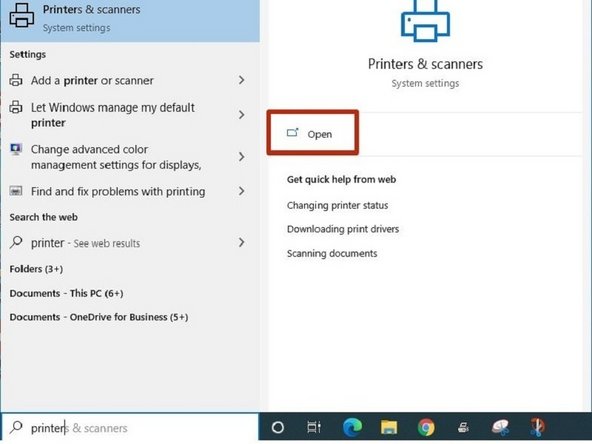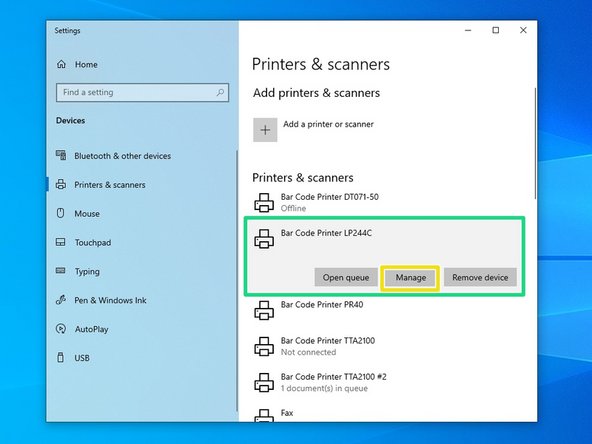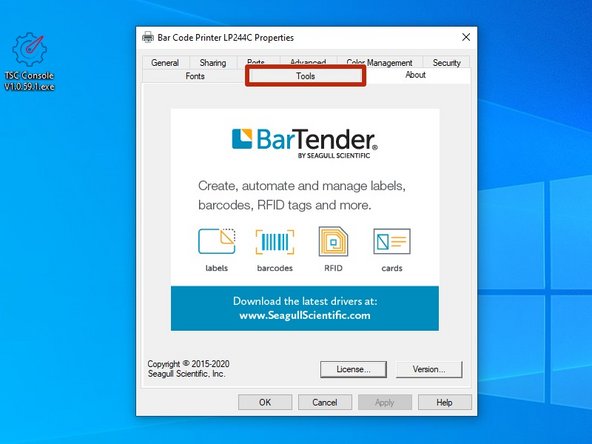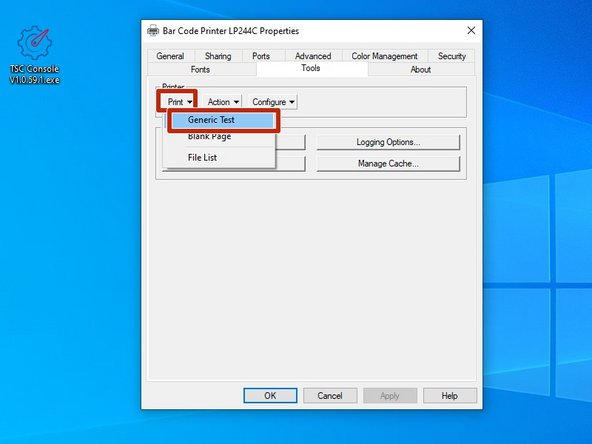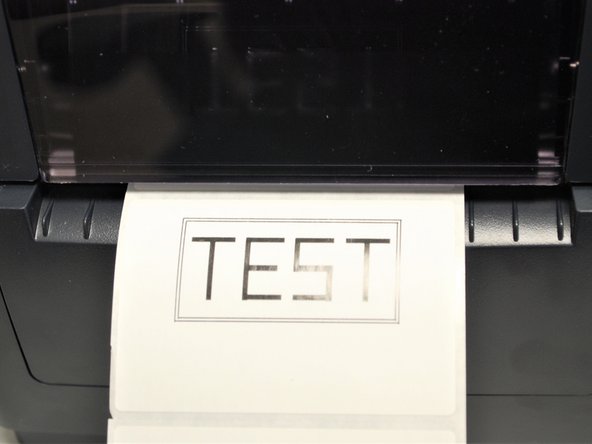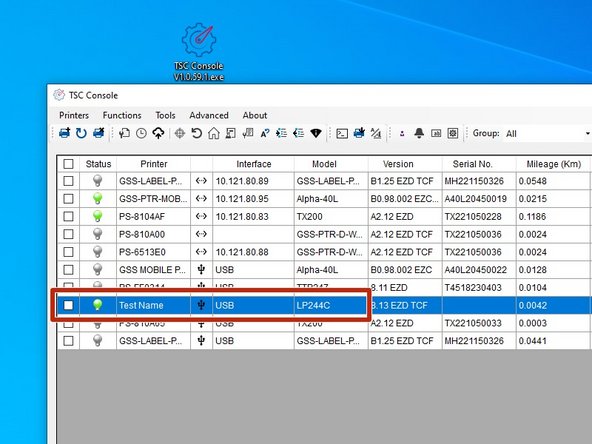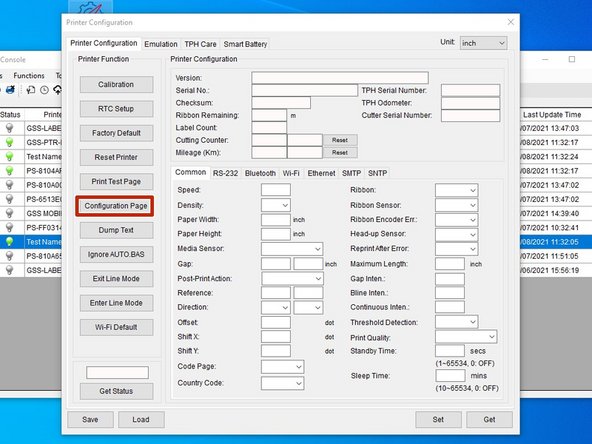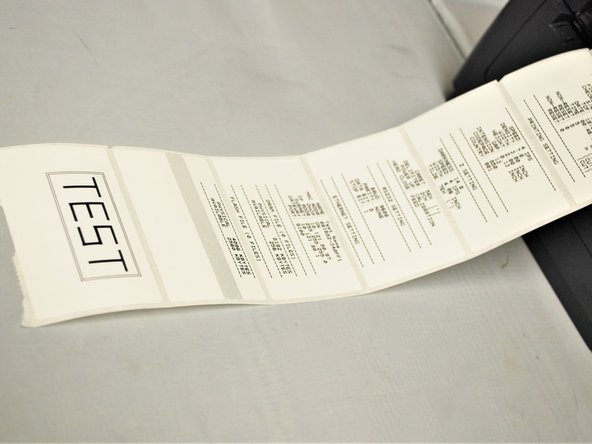-
-
Thank you for purchasing the GSS-LABEL-PTR-D!
-
If any time during this guide you get lost or confused, please feel free to reach out to us at EMS for Support.
-
You can book an appointment under '000 - Support,' or click HERE.
-
Service is Standard!
-
-
-
A. One printer unit
-
B. Four Rolls of Labels (Two 4x6 & Two 4x2 Direct Thermal Rolls)
-
C. One empty spindle
-
D. Power cable and power adaptor
-
E. One USB cable
-
F. One ethernet cable
-
G. One Quick Start Guide with Cleaning Pen
-
H. Three year warranty (not pictured)
-
-
-
1. Ribbon Access Cover
-
2. Top Cover Open Lever
-
3. Feed Button
-
4. LED Indicator
-
5. Media View Window
-
-
-
1. Ribbon Rewind Hub
-
2. Ribbon Rewind Gear
-
3. Gap Sensor (receiver)
-
4. Printhead
-
5. Ribbon Supply Hub
-
-
-
1. Top Cover Support
-
2. Media Guide Adjustment Knob
-
3. Black Mark Sensor
-
4. Platen Roller
-
5. Gap Sensor (transmitter)
-
6. Media Holder Lock Switch
-
7. Media Holder
-
-
-
Scrape your thumbnail along your labels.
-
Thermal Transfer labels will not show a grey mark and does use ribbon. (Shown on Left)
-
Direct Thermal labels will show a grey mark and does not use ribbon. (Shown on Right)
-
If you have Direct Thermal, go to Step 7 or click HERE.
-
If you have Thermal Transfer, go to Step 12 or click HERE
-
-
-
Make sure the printer is on a stable, flat surface, and turned off
-
The indicator LED should be unlit.
-
Pull forward on the green Top Cover Open Levers on either side of the printer.
-
You will feel the cover release, and then you can lift the cover until the top cover support clicks into place.
-
Ensure the Media Holder Lock Switch on the Media Holder is switched to 'unlock.'
-
Fully open the green media holders
-
-
-
Use one hand to hold the roll of labels and place it on one holder
-
While holding the labels in place, use your other hand to push the holders together, so that they hold the roll of labels.
-
Push the locking tab down into the 'Locked' position. It will snap firmly into place.
-
If you need to remove the roll, make sure that you move the tab back up into the "Unlocked" position; otherwise the holders won't open. NEVER force the holders open, you WILL break them.
-
-
-
Take the leading edge of the labels, and pull it out past the front of the printer.
-
The label should face upwards, as shown in Image 1, and follow a similar path as shown by the pink arrows.
-
While pressing the labels flush, spin the green Media Guide Adjustment Knob on the right, shown by the blue arrows in Image 2, towards the front of the printer.
-
Do this until the black Media Guide clips are holding the labels in place, as shown by the orange boxes on Image 3..
-
These guides keep the labels running straight, so it's important to make sure they're not so tight they stop the labels from coming out smoothly.
-
-
-
Pull the labels forward until the perforated border between labels line up with the tear off edge of the printer.
-
Check the path of the labels. It should look like the second picture here.
-
-
-
Before you close the printer cover, you MUST move the Top Cover Support tab at the back out of the way.
-
Be VERY careful to not force the cover shut or break the support. If the tab breaks, the cover won't hold open.
-
In the back right of the printer, push the green Top Cover Support in.
-
While pressing on the support, carefully close the printer and remove your finger as you shut the Top Cover
-
Press down on the top of the printer so it 'clicks' shut.
-
-
-
Make sure the printer is on a stable, flat surface, and turned off
-
The indicator LED should be unlit.
-
Pull forward on the green Top Cover Open Levers on either side of the printer.
-
You will feel the cover release, and then you can lift the cover until the top cover support clicks into place.
-
Ensure the Media Holder Lock Switch on the Media Holder is switched to 'unlock.'
-
Fully open the green media holders
-
-
-
Use one hand to hold the roll of labels and place it on one holder
-
While holding the labels in place, use your other hand to push the holders together, so that they hold the roll of labels.
-
Push the locking tab down into the 'Locked' position. It will snap firmly into place.
-
If you need to remove the roll, make sure that you move the tab back up into the "Unlocked" position; otherwise the holders won't open. NEVER force the holders open, you WILL break them.
-
-
-
Take the leading edge of the labels, and pull it out past the front of the printer.
-
The label should face upwards, as shown in Image 1, and follow a similar path as shown by the pink arrows.
-
While pressing the labels flush, spin the green Media Guide Adjustment Knob on the right, shown by the blue arrows in Image 2, towards the front of the printer.
-
Do this until the black Media Guide clips are holding the labels in place, as shown by the orange boxes on Image 3..
-
These guides keep the labels running straight, so it's important to make sure they're not so tight they stop the labels from coming out smoothly.
-
-
-
Pull the labels forward until the perforated border between labels line up with the tear off edge of the printer.
-
Check the path of the labels. It should look like the second picture here.
-
-
-
Identify the plastic tab (shown by the orange arrow) on the ribbon and which way the ribbon is wound around the core (shown by the red arrow), as shown in Image 1.
-
Insert the ribbon by first pressing it into the spring loaded holder on the right.
-
Be sure to keep the plastic tab on the bottom and while having the ribbon being fed towards you, shown by the yellow box.
-
Fit the other side of the ribbon into the holder on the left.
-
-
-
Now that the ribbon is mounted, pull on the plastic tab to unwrap the ribbon.
-
It will unwrap from the bottom, as shown in Image 1.
-
If it unwraps from the top, take the ribbon off and repeat the last step with it mounted in the other way.
-
Begin wrapping the plastic tab around the core, it will adhere to it.
-
Continue wrapping the ribbon around the core until you begin to see the black ink, as shown in Image 3.
-
-
-
Much like loading the ribbon, load the core on the right first into the spring loaded holder.
-
While holding it to the right, out the core into the holder on the left to hold it in place.
-
Once the core is secure, use the Ribbon Rewind Gear to remove any slack from the ribbon loaded into the printer
-
To use the gear, turn it upwards.
-
-
-
Test the orientation of the ribbon:
-
Get a piece of regular tape.
-
Put the piece of tape on the ribbon.
-
Remove the piece of tape.
-
If there is ink on the tape and ink came off the ribbon, the ribbon is facing the correct direction. If there is no ink, repeat Step 16 with the ribbon facing the correct direction.
-
-
-
Check the path of the labels and ribbon. It should look like the first picture here.
-
Close the ribbon access cover
-
-
-
Before you close the printer cover, you MUST move the Top Cover Support tab at the back out of the way.
-
Be VERY careful to not force the cover shut or break the support. If the tab breaks, the cover won't hold open.
-
In the back right of the printer, push the green Top Cover Support in.
-
While pressing on the support, carefully close the printer and remove your finger as you shut the Top Cover
-
Press down on the top of the printer so it 'clicks' shut.
-
-
-
A. Ethernet interface
-
B. USB interface
-
C. Power cord socket
-
D. Power switch
-
-
-
Place the printer on a flat, stable surface.
-
Take the plastic film off of the printer, and get the cables out of their packaging.
-
Make sure the power switch is off.
-
-
-
USB-B
-
USB-A
-
The USB-B and USB-A are two ends of the same cable. The USB-B to USB-A cable is only used for initial set-up and support. It should NOT be used for other purposes.
-
Ethernet
-
This cable is double ended with an ethernet jack on both sides. This is used for wired network connection, a network type which connects devices to the Internet or other networks using cables.
-
-
-
Plug the USB-B into the printer's USB interface on the back.
-
Plug the USB-A into your computer/laptop's USB port.
-
To correctly identify the USB-B from the USB-A, please refer to the last step.
-
Connect one end of the ethernet cable to your printer's ethernet interface on the back.
-
Connect the other end of the ethernet to your network.
-
-
-
Power Outlet Plug
-
AC Adaptor Plug
-
The Power Outlet Plug and the AC Adaptor Plug are two ends of the same cable.
-
Printer Power Plug
-
AC Adaptor Port
-
The Power Power Plug and the AC Adaptor Port are two ends of the same cable.
-
Connect the AC Adaptor Plug into the AC Adaptor Port
-
-
-
Connect the Printer Power Cord into the back of the printer in the power cord socket.
-
Make sure the printer is OFF before continuing and plugging it into the wall.
-
Once the Printer Power Cord is connected and the printer is off, connect the Power Outlet Cord into a power outlet.
-
-
-
Now that the USB-B is connected and the Printer has power, you will be able to connect to the printer in the GSS Certified Printer Tool.
-
To download the GSS Certified Printer Tool, click HERE
-
Select "Add Printers" shown by the red box.
-
Confirm that 'USB' is selected. The drop down next to it should read 'GSS-PTR-D-WIRELESS.' These are both shown by the orange box. Click 'OK'
-
If the printer does not appear in the dropdown, click the "Refresh USB List" button shown by the green arrow. If it still does not appear, try turning off the printer, waiting a moment for it to fully power off, then powering it back on and repeating this step.
-
Under status, a green bulb will appear for the printer when it is online, and it will turn grey when it turns offline.
-
Under status, a green bulb will appear for the printer when it is online, and it will turn grey when it turns offline.
-
-
-
Now that the Ethernet is connected and the Printer has power, two LEDS will light up by the ethernet port.
-
The amber light will stay solid while the green light will be blinking.
-
-
-
For labels to be sent to this printer, the device will have to be connected to your network and be given an IP address. For the best results, this IP address should never be changed. To do that, if you are not IT, you will need to get the IT department involved for the following steps.
-
There are two ways to set an IP address. The first way is through DHCP reservation, and the second is by assigning a static IP address.
-
DHCP reservation begins with an IP address being given to a device automatically. Then, the IT department can indefinitely reserve the IP & MAC addresses so that no other device, current or future, will ever be given that specific IP address.
-
A static IP can be given to you by the IT department, then manually typed into the printer. This method will also keep the IP address from ever being used for another device.
-
Both the Static and DHCP reservation methods will be covered in this guide, along with how to see the IP & MAC addresses.
-
Wired and Wireless connections both have separate and unique MAC addresses. If you plan on using Wired and Wireless connections at the same time, you must have a unique IP address for both.
-
-
-
Double click the printer name to open up the Printer Configuration Menu.
-
In the Printer Configuration Menu select the 'Ethernet' tab in this menu.
-
Click on 'Get' in the bottom right hand of the pop up, shown by the orange box.
-
The fields will now populate with information given from the printer, shown by the green box.
-
-
-
You may change the printer's ethernet name in this menu.
-
Set the printer's name to anything you want that's simple and easily understood. For example, GSS-PTR-TST for Global Shop Solutions Printer Test.
-
There is a character limit of 15 characters for the name. If there are more than 15 characters, the printer name will not be applied.
-
If you changed the name, apply this change by clicking 'Set' next to the 'Printer Name' text box.
-
After you click 'Set,' the printer will restart. This is normal.
-
-
-
These two addresses are what IT needs for a DHCP Reservation.
-
-
-
These next steps will cover how to load the printer drivers on the GSS DB server, either by you or by your GlobalShop Rep. You only need to install the drivers once. If you are unsure what to do, please wait for you GlobalShop Rep to help.
-
Printer driver link can be found HERE.
-
If you are waiting for your GSS Representative to install printer drivers on the server, then skip to Step X or click HERE.
-
When looking for this printer in the driver, you will use this printer name: LP244C
-
-
-
After downloading the driver program, find and right click the program, and choose "Run as Administrator."
-
While downloading and initializing the software, you may encounter slightly different pop-ups. This depends on your Admin Privilege on the device you are using.
-
Review the EULA. If you agree to the terms of use, select the appropriate response and press the "Next" button.
-
-
-
Review the Installation Destination and change the location, if desired. Click "Next" to continue.
-
Choose to "Run Driver Wizard..."; the second option is unnecessary. Then select "Finish."
-
After installation is completed, the Driver Wizard will start. Choose the option to "Install printer drivers" and click "Next."
-
-
-
Choose the option for "Network (Ethernet or WiFi)," then click the "Next" button.
-
Scroll down until you find the printer model "Bar Code Printer LP244C." Click on it, and while it is highlighted, click the "Next" button.
-
Select the option to create a port.
-
-
-
Select "Standard ICP/IP Port," and then click "New Port."
-
Make sure the printer is turned on, connected to the network, and configured, then select "Next." If you've followed this guide so far, you should be good.
-
For the IP Address, enter the IP that you set for your printer.
-
-
-
Select the option for "Standard" device type, and from the dropdown select "Generic Network Card." Once it's selected, hit the "Next" button.
-
Review the selections, the hit "Finish."
-
Once the wizard finishes and closes, click "Close" to close the "Create Port" window as well.
-
-
-
Select the new port you just made, and hit "Next."
-
There are some options that can be customized before installation of the driver. You can choose to rename the printer (Orange). Hit "Next" when you've made your choices.
-
For standard setup, we recommend against:
-
Setting the printer as default printer (green).
-
Sharing it (yellow).
-
If you do not know what these settings do, please do not edit them.
-
Confirm setup option before pressing "Finish". If anything needs to be changed, press "Back".
-
You may receive a Security Warning from Windows. If you do, choose the option to "Install".
-
-
-
Search for 'Printers & Scanners' in the Windows taskbar search bar.
-
Search for 'Printers & Scanners' in the Windows taskbar search bar.
-
Click on the printer you set up in the previous guides.
-
Select the "Manage" option.
-
Select the "Printer Properties" option.
-
-
-
Select the "Tools" tab at the top of the new window.
-
Click on the drop-down menu labeled "Print" in the "Printer" section.
-
Select "Generic Test" from the list of options.
-
This should print a test label, which should look like the example image.
-
If no page printed, check that the roll of labels is loaded correctly, and that the correct printing options are selected.
-
-
-
Launch the GSS Certified Printer Tool software.
-
Double click the printer name, to open up the Printer Configuration Menu.
-
In the Printer Configuration Menu, select the 'Configuration Page' option under the 'Printer Function' table.
-
Once the printer is done printing, verify that the pages look like the example images.
-
Congratulations! You have now successfully set up your new GSS-LABEL-PTR-D!
-
Almost done!
Finish Line



